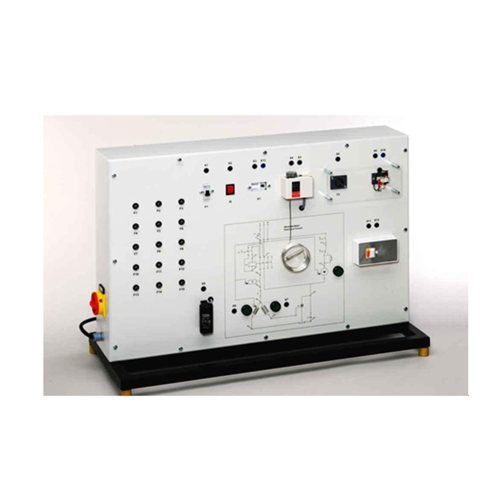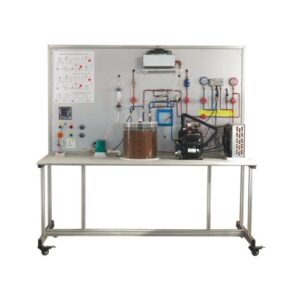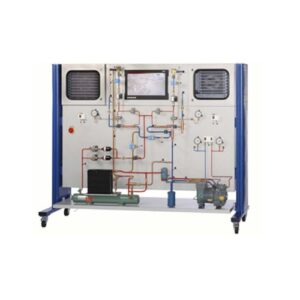AZM6147 Electrical Faults in Simple Air Conditioning System Teaching Equipment
Technical Description
Identifying electrical faults in air conditioning systems requires
comprehensive knowledge This knowledge includes the design and
operation of the individual electrical components as well as the reading of
circuit diagrams. helps to acquire this knowledge.
demonstrates the electrical circuit of a simple air conditioning
system, consisting mainly of a refrigerant compressor and fan at the air
cooler. The control circuits are actually present. Compressor and fan
motor are simulated.
The compressor is controlled via a thermostat. Via a ballast the fan
motor speed can be switched in two stages. The start of the compressor
motor takes place via a start-up relay and start-up capacitor.
Typical protection devices, such as circuit breaker, complete the
electrical circuit. The operating state of the simulated components
compressor and fan is indicated via lamps in the circuit diagram on the
front panel.
The simulation of 15 different faults, such as coil fracture in the motor or
faulty switching contact, is possible. For fault indication, voltages and
resistances are checked at the lab jacks with the multimeter. The
depiction of the circuit diagram on the front panel facilitates the allocation
of the measuring points.
The well-structured instructional material sets out the fundamentals
and provides a step-by-step guide through the experiments.
Learning Objectives / Experiments
– electrical design and principle of operation of
simple air conditioning systems
– read and understand electrical circuit diagrams
– design and operation of electrical components in
an air conditioning system
* start-up capacitor
* start-up relay
* overheat protection
* main contactor
* automatic fuse
* on/off switch
* speed switch
* thermostat
– fault finding in electrical components











